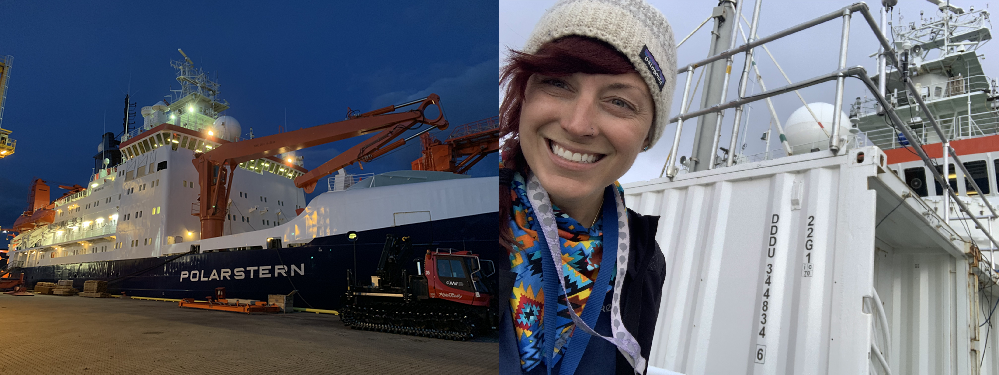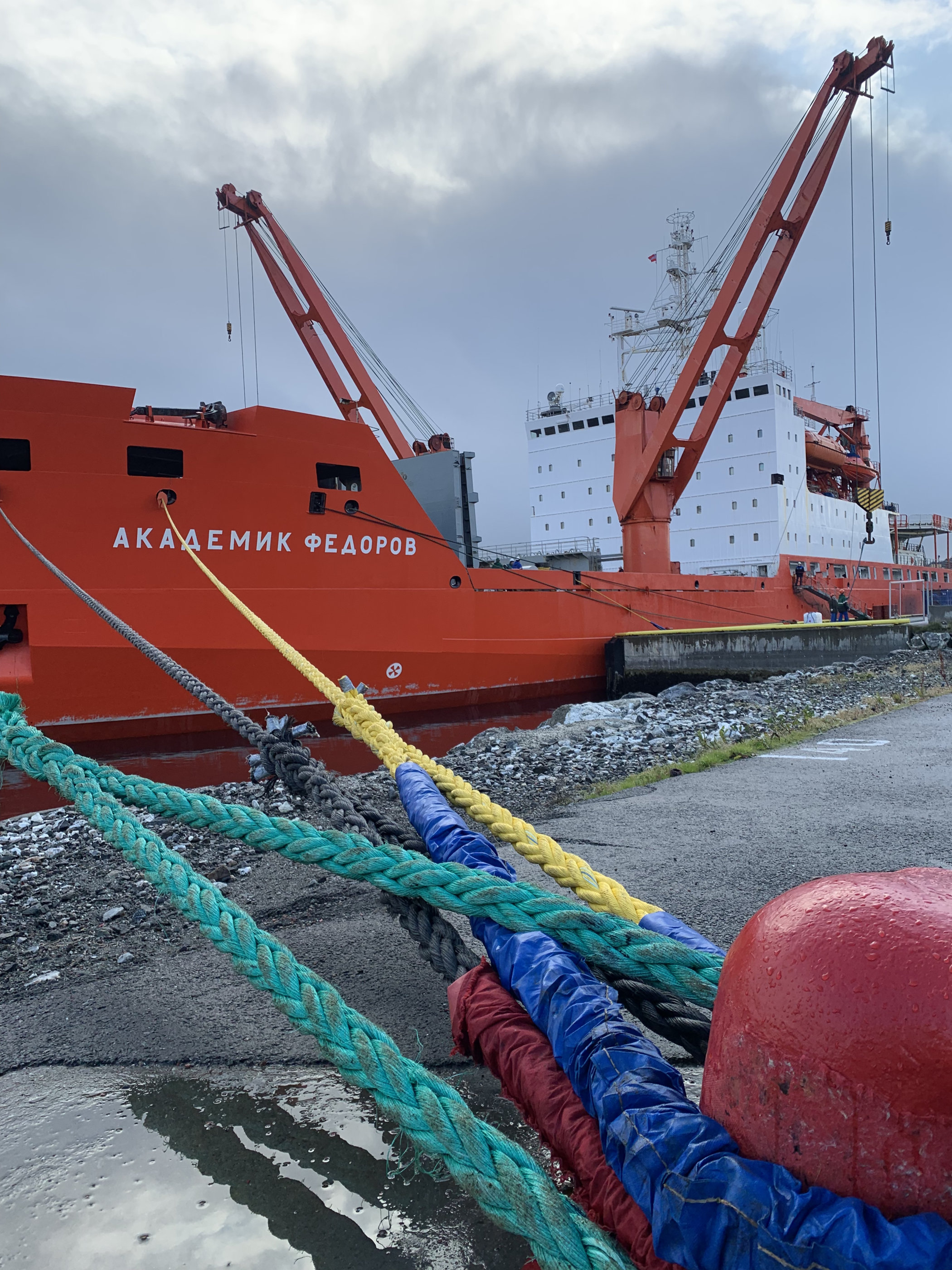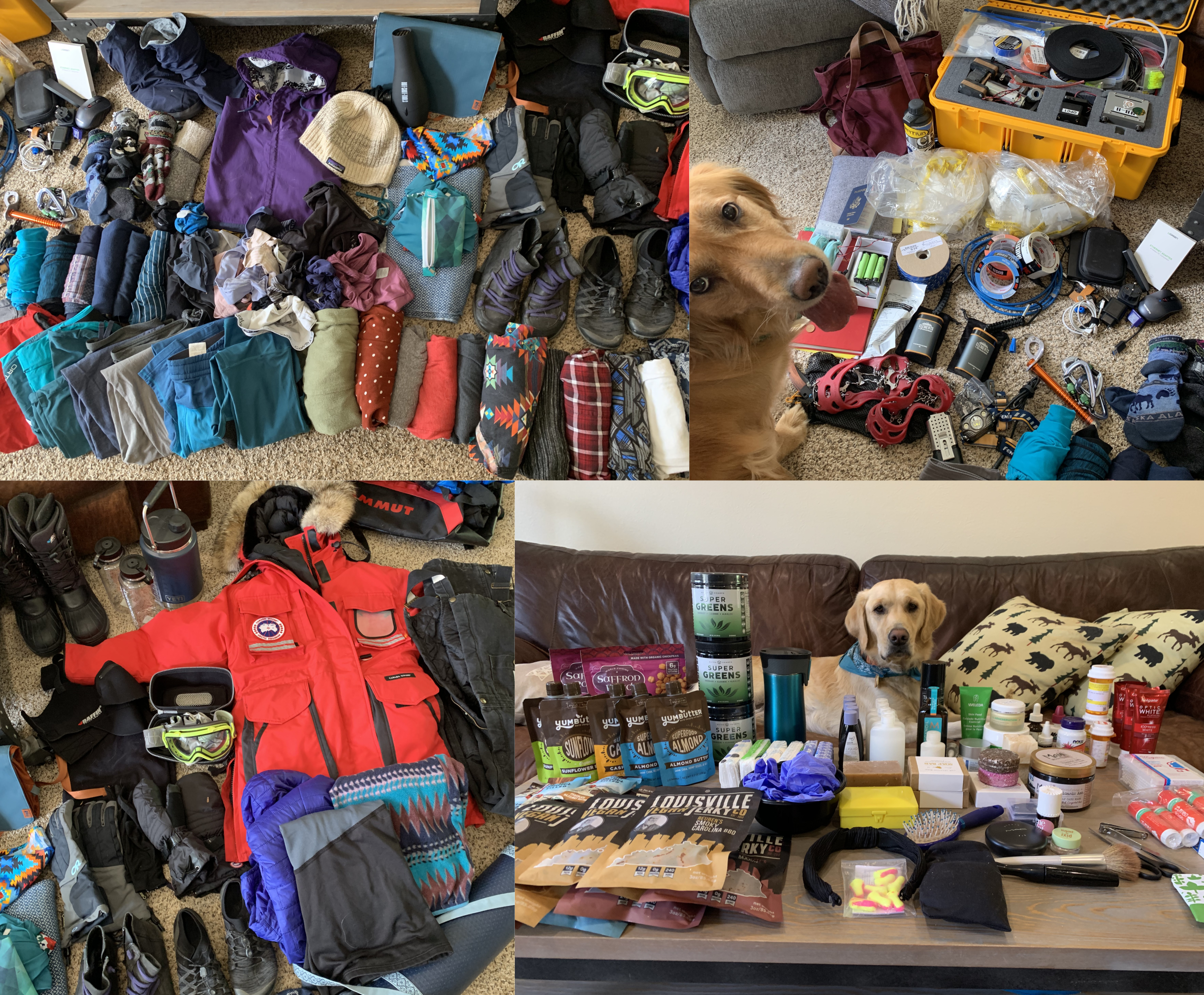Winter Hats, Yoga Mats, and a Parka: The Arctic Gear Junkie Sets Sail for the North Pole
Published: 23 September 2019
Editor’s note: Jessie Creamean, a research scientist at Colorado State University, is participating in the Multidisciplinary Drifting Observatory for the Study of Arctic Climate (MOSAiC) field campaign. Creamean wrote this blog post before starting her journey toward the central Arctic on September 20, 2019.
Four months. Frozen on a German ship in the sea ice (yes, on purpose). In complete darkness. At temperatures reaching minus 50 degrees Celsius. So, what am I researching during this expedition? What do I pack, one might ask? More importantly, why in the world would I want to do this?!
By the time this will have posted, I will have embarked on one of the most epic arctic research expeditions to date, sailing north, where the German icebreaker called Polarstern (a big ship that can plow though thick sea ice) will be frozen in the sea ice for over a year.
As for the question of what am I researching? I am a funded principal investigator through DOE ARM and the Atmospheric System Research (ASR) program to measure what are called ice-nucleating particles, which are tiny aerosols that originate from things like microorganisms in the seawater and sea ice that help with cloud formation. Arctic clouds are crucial because they essentially act like mirrors and thermostats of the atmosphere, controlling the amount of sunlight that gets reflected to space and the amount of heat that is trapped in the atmosphere. These radiative effects impact the sea ice extent, rain and snow, and weather and climate … not only in the Arctic, but also weather and climate globally.
The mentality on board is very team-oriented. We all want to work together to get the samples and measurements we need, not just for the scientists on board, but for others in the community and beyond to have the chance to work with arguably one of the most elaborate and holistic data sets from a single field expedition EVER. I will be helping with the extensive task list of the ecology team, whereby I will be busy day in and day out, helping with ice coring, snow pit sampling, seawater sampling, and then preparing those samples for preservation and analyzing some of those samples on board for gases that come from the microbiome. I also have some samplers that essentially act like vacuum cleaners, sucking in particles from the air for us to measure ice-nucleating particles and microbes back in Colorado after the study segments. Last, I have a portable aerosol sampler I built to bring onto the ice to measure and collect aerosols near features in the ice such as melt ponds and leads (big cracks that appear in the ice).


There are two huge icebreakers heading up north currently, the Polarstern and a Russian icebreaker called the Akademik Fedorov. We need more researchers and crew than the Polarstern can fit to set up the scientific equipment on the main observatory and in the expansive network of stations that will be taking measurements directly on the sea ice. We also have several media personnel to report the fascinating activities happening on both vessels.
I am currently on the Fedorov and will help set up the network of sea ice stations once we start to get frozen in. Then, I will move over to the Polarstern, which I will call home until mid-December.
So, back to those last two burning questions I am sure you have in your head while reading this blog post …
What do I pack? As you can see from the photo below, I have everything from my parka, a yoga mat, snacks, green superfood powder, batteries, micro spikes, heavy-duty arctic boots, several tubes of toothpaste, duct tape, sample bags, paracord, goggles, heavy-duty gloves … and much, much more. I have to bring duplicates of things like gloves, buffs, and layers in case I get sweaty or wet while working on the ice. No one wants to get hypothermia in the middle of the remote central Arctic! This layout is only part of what I had to bring for the expedition. I have 24 boxes of cargo currently on the Polarstern for sampling aerosols, sea ice, seawater, and snow.
OK, last question … why the heck would I do this?! Honestly, I am more excited than I have ever been when going into the field. MOSAiC is a HUGE opportunity to engage in true system science, to live, breathe, sleep, and collaborate with scientists from all over the world and from very different disciplines, all of us wanting to address the one central unknown about arctic climate and how and why it is drastically changing. I am honored to be a part of such an incredible opportunity and to be exposed to living in a bizarrely beautiful place only few in the world are able to step foot in.
Well, I must get to work preparing for the expedition as we sail north. Stay tuned for more posts in the upcoming months! Bon voyage for now!

Keep up with the Atmospheric Observer
Updates on ARM news, events, and opportunities delivered to your inbox
ARM User Profile
ARM welcomes users from all institutions and nations. A free ARM user account is needed to access ARM data.


















